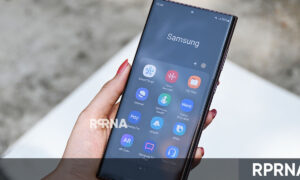Semiconductor shortages have left the GPU market a bit dry, but if you need to build or upgrade your PC and need a different graphics card, there are still a few offers if you have a good eye (and happy times).
However, since we already know what GPU deals are, we can help you find one with a little buying guide. If you keep your options open or can’t find a deal on the GPU you want, check out these gaming PC deals and gaming laptop deals that are a great way to get a good graphics card in the current market.
Stay tuned with us via Telegram
Today’s best GPU deals
- VisionTek Radeon 5450 1GB DDR3 GPU — $54, was $65
- BTO GeForce GT 730 4GB GDDR3 GPU — $125
- Asus GeForce GT 1030 Phoenix Fan OC Edition 2GB DDR5 GPU — $180
- Asus GeForce GTX 1050 Ti Phoenix Fan Edition 4GB GDDR5 GPU — $350, was $400
- ASUS Phoenix NVIDIA GeForce GTX 1650 OC Edition 4GB GDDR6 GPU — $450
- Asus TUF GeForce GTX 1650 OC Edition 4GB GDDR6 GPU — $495
How to choose a GPU
The cryptocurrency mining boom caused a crisis in GPU availability for several years (video cards being necessary to mine things like Bitcoin) causing prices to skyrocket, and if you remember that, then you know it was a dark time for PC builders for awhile.
Thankfully, things have stabilized in recent years; on top of that, there are now plenty of surprisingly cheap GPUs that make 1080p/60 fps PC gaming more accessible than ever — and if you want to get into 1440p Quad HD or 4K Ultra HD gaming, you’ve got more than a few options there, too.
When shopping for GPU deals, the two big names you’re going to see are AMD Radeon and Nvidia GeForce. These are often sold under different brand names (such as XFX, MSI, Asus, and so on), but the GPU hardware itself — that is, the stuff that actually does the heavy lifting when it comes to graphics processing — is pretty much the same.

The differences between card manufacturers will come down to details like heat sink efficiency and cooling capabilities. Be sure to read plenty of customer reviews, but generally speaking, you’re in safe waters sticking with a highly rated card from a reputable maker.
As far as choosing between AMD and Nvidia, you can’t really go wrong with either. Both companies make great graphics cards, and today, you can find cheap GPUs from either one that are capable of running modern games at 1080p resolution and 60 frames per second (the standard for PC gaming).
AMD Radeon cards are typically touted as the superior value, but Nvidia cards aren’t typically priced much higher and GPU deals mean you can often find the latest GeForce video cards for the same price you’d pay for an equivalent Radeon GPU. Also, don’t assume that because you have an AMD CPU that you need an AMD GPU. AMD CPUs pair perfectly well with Nvidia video cards.
Of all PC components, graphics cards cover perhaps the widest range of capabilities and price points. The AMD Radeon RX 500-series and 5500 cards deliver excellent 1080p performance and are a great value. In the same bracket are the Nvidia GeForce GTX 16-series cards (1650, 1650 Super, 1660, 1660 Ti, etc.).

Expect to pay around $150-$250 for a cheap GPU in this category. On the higher end of the spectrum are the AMD Radeon RX 5600- and 5700-series cards and the Nvidia GeForce RTX 20-series and 30-series cards. These are naturally pricier, but are a better choice for enthusiast PC builds where 1440p or 4K gaming are a priority. We generally advise against the last-generation Nvidia GTX 10-series cards unless your budget is tight and you find a really good GPU deal on one.
One final consideration (but one that’s no less important for a gaming PC setup) is your monitor. A proper gaming monitor will have built-in vertical sync technology — either AMD FreeSync and Nvidia G-Sync — that’s made to work with one of the two GPU brands. Generally speaking, a FreeSync monitor is made for AMD cards while G-Sync monitors work best with Nvidia cards, but this isn’t a hard rule.
Nvidia has been offering more cross-compatibility support for its cards lately, and many FreeSync monitors work fine with Nvidia GPUs (although you may have to use a DisplayPort cable instead of HDMI for the best results, so make sure your monitor supports that). Again, be sure to do your research when shopping for monitor deals to ensure your display is fully compatible with your GPU and vice-versa.













